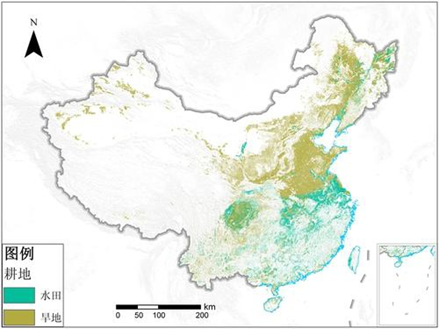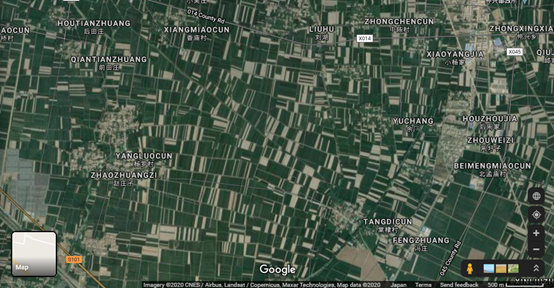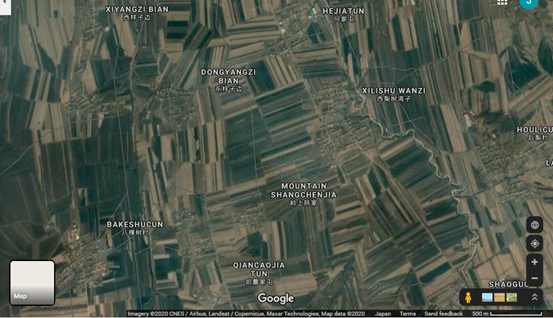While the imagery looks wholesome, the strategic importance of agriculture in the Northeast cannot be overstated, and it& #39;s a big deal to China& #39;s leaders - hence Xi taking a look. THREAD /1 https://twitter.com/zaikandongxi/status/1285970442419875841">https://twitter.com/zaikandon...
First, it’s essential as part of a long-term effort to “rejuvenate the industrial bases of the Northeast”. The central government has dumped incredible support over the years trying to keep heavy industry alive and developing in the NE, but it hasn’t yielded results /2
Emphasizing agricultural development is prudent, because it’s something that provinces like Jilin actually have a competitive natural advantage in, and in a way that can be scaled up to provide good incomes, but also so that China can further strengthen food security. /3
Much of China’s food production still relies on small farms run by local families, just as it was for most of post-1949 history (Great Leap Forward excluded). The plots are mostly small, and they generate pretty meager incomes for those working the land. /4
In some areas, this sort of small-scale inefficient farming is the only option. You can’t really mechanize agriculture in much of the country – good luck running a tractor in the mountainous south, where terracing is so common for a reason. /5
Despite its size, China has a surprisingly small amount of arable land, especially the kind that is suitable for large-scale agriculture. China basically has three regions suitable for development into ‘bread baskets’ – Sichuan, the northern plain, and the Northeast /6
So why not develop all three? Well, they’re trying, but the Sichuan basin and the northern Chinese plain have a problem: Too many people with too many land rights. Despite heavy migration from rural areas to the cities, many migrant workers hold on to their land rights /7
Middle/upper class migrants often still have parents that stay in the villages, who now often have towering modern houses in contrast to their neighbors. Working class migrants often keep their parents and children there as well. /8
Furthermore, migrant workers often keep their land rights because of the Hukou system, which will not allow them to legally register in the cities in which they work. Their land then becomes a kind of insurance – both for later retirement, but also as a fallback option. /9
The result is that it’s difficult to take massive swathes of land from entire communities to then turn into single farms suitable for industrial agriculture. So let’s look at the population density of these areas to see how much consolidation is necessary for each. /10
Sure enough, the most suitable lands in the Sichuan Basin and the Northern Chinese Plain are densely populated. /11
Here’s a map shot of a region in Northern Anhui near a friend’s hometown. See how intensely broken up the farm plots are? Also note the abundance of small villages. Even if you could consolidate the land to scale up farming, you’d have to move all these people. /12
Compare the above shots to this one from Kansas, which is also further zoomed out than the ones in Sichuan and Anhui. The whole land is organized to suit mechanized agriculture. /14
Jilin is still densely populated by US Midwest-standards, and it has the small plot issues in common with Sichuan and the Northern Plain – here’s a typical farming region not far from Changchun. But its demographic trajectories are very different. /15
The Northeast never had a chance to develop the massive populations that Sichuan and the plains did. The latter two had thousands of years of agriculture and growth, while much of the NE was populated largely by Manchu nomads/herders. /16
Population booms in the last 200 years in the NE relied largely on migration of Han settlers in the late Qing and then again after 1949, when the leftover industry from the Japanese made it an important industrial centre, plus aid from the Soviets made it more viable. /17
But since reform and opening, the NE has been in decline, and people have left permanently en masse. This makes it much easier for the government to look at land consolidation to establish scaled up agriculture. /18
China’s leaders view food security in very different ways than people in the US or Europe might. Not only is there living memory of famine and starvation, but there’s also a government mentality that China must always be ready to go it alone. /19
As older generations that still contribute to much of China’s food production start to die off without their children moving back to the farm to keep things growing (better opportunities in the city) food security must weigh heavily on leaders’ minds. /20
Doing more with fewer workers is a constant theme in China’s economic plans, as is trying to find ways to make better paying jobs for people in the countryside. Xi going out to Jilin to look at scaled up farms and check out the dark black soil is just a part of that. /end

 Read on Twitter
Read on Twitter








